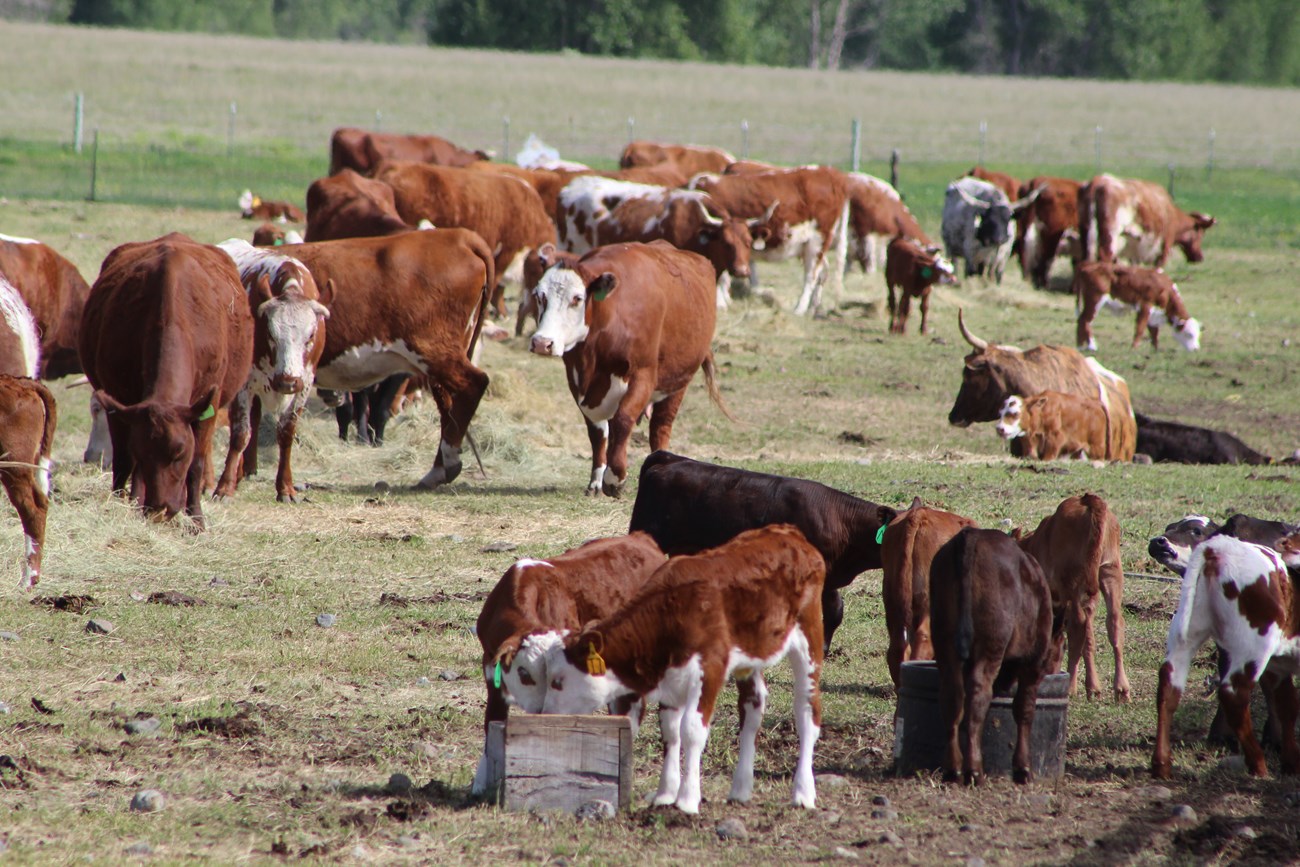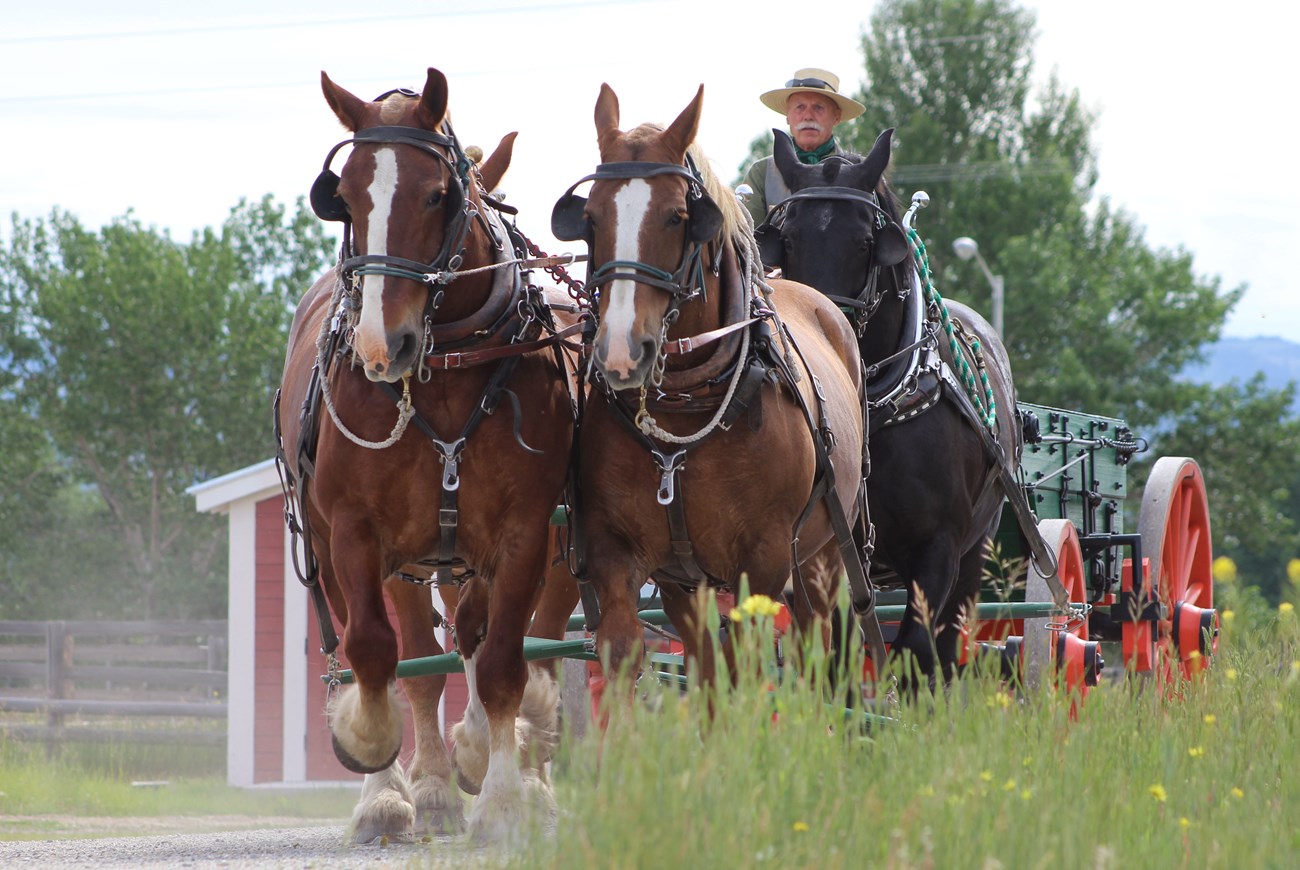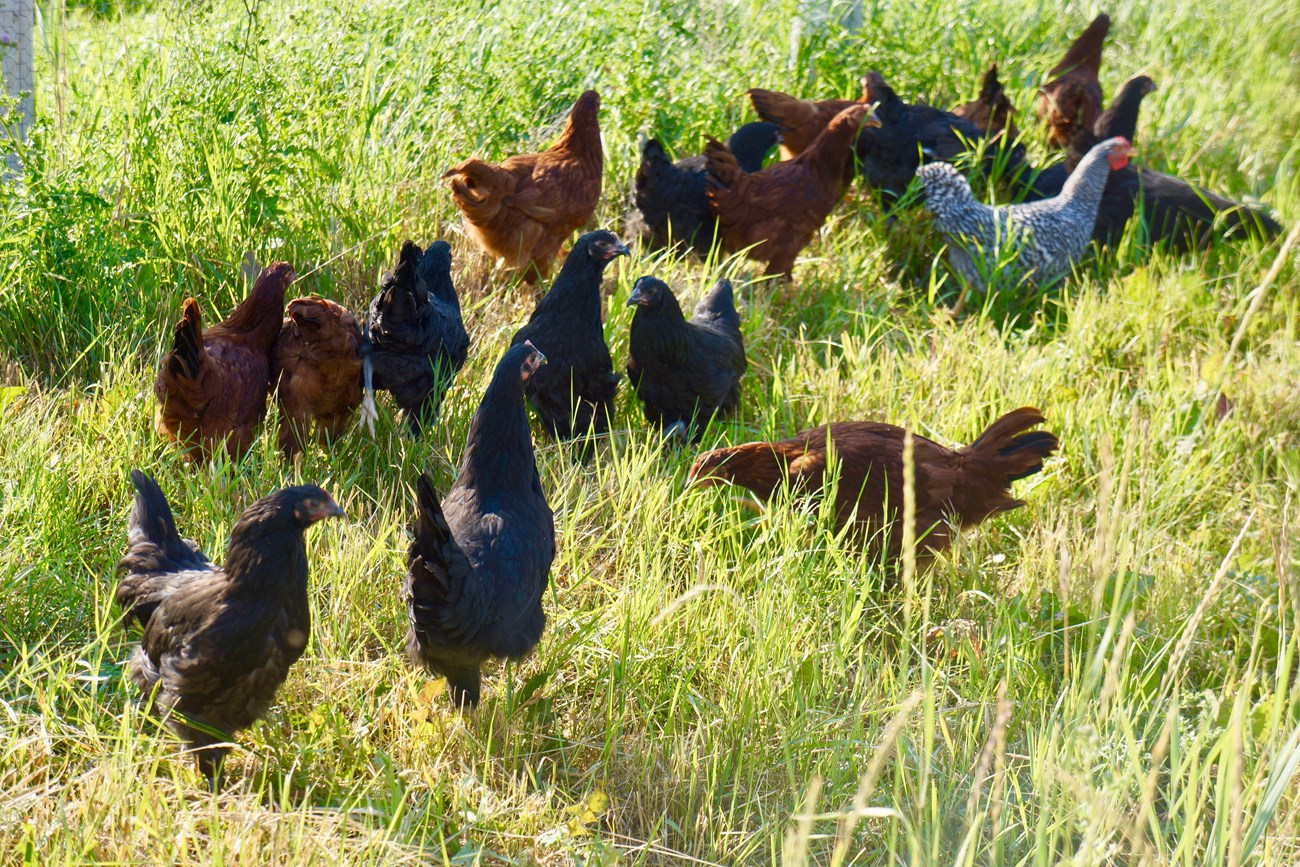
NPS Photo/Michael Oestriech CattleGrant-Kohrs Ranch herd contains three of the main breeds of cattle that were on the Open Range: Shorthorn, Texas Longhorn and Hereford.Cattle can be seen on the ranch year-round. It is important for the health of the herd and the pastures they graze, to rotate where the herd is kept. Depending on when you visit, you might catch the cattle being moved from one pasture to another, being vaccinated, sorted in the corrals or laying in the sun chewing their cud. Newborn calves can be seen each spring, usually beginning near the end of April. The cows continue to calve throughout May and are kept in corrals, where they can be safely seen up close. Please respect the new mothers by keeping a safe distance, at least 3 feet back from the fence, and quietly observe. You can see the calves take center stage at the Branding event in early July. 
NPS Photo/Michael Oestriech HorsesHorses do important ranching work throughout the year. Saddle horses and draft horse each have specific jobs to do.You may see one of the saddle horses, with their rider, moving the cattle, riding through the herd to make sure they are well or riding out to check the fences. Saddle horses, usually mustangs, made the Open Range Cattle Era possible. Imagine trying to round up a herd of wild Texas Longhorns and drive them hundreds of miles to market on foot. The draft horses take care of the heavy lifting. These gentle giants are usually paired with a partner and work as a team. You might see them pulling haying equipment, experience their horsepower on the wagon tour or catch them being harnessed in the draft horse barn. 
NPS Photo/Ken Larson ChickensChickens were commonly raised on ranches for eggs as well as meat.You may see the chickens out in the run, soaking up some sun, pecking around for bugs, or digging a hole into the ground to giving themselves a nice dust bath. You might be able to eaves drop on some chicken conversation, since that clucking is how the chickens “talk” to each other. |
Last updated: April 30, 2020
